Opensignal Examine Impact of WiFi on Real vs Subscribed UK Broadband Speeds

Network testing firm Opensignal has published a new study that examines the “striking gap” between the home broadband speeds users are promised by ISPs and the speeds they actually experience – “the biggest factor behind this disconnect is the in-home Wi-Fi environment“.
The new study, which uses data collected during Q1 2025, looks at the percentage of households in a country achieving specific broadband speed levels, based on real-world measurements taken from users’ devices. But in order to do this it appears to manufacturer its own speed tiers by looking at the percentage of their panel that experience different speed levels, which isn’t necessarily an accurate reflection of the package class that end-users have actually taken from their ISP.
“These indicators categorise household-like Wi-Fi environments, which are approximated based on user device behaviour and network characteristics, by the maximum download speeds measured over home Wi-Fi. We look at three performance tiers: equal to or above 30Mbps, 100Mbps, and 250Mbps,” said Opensignal.
Advertisement
For example, the study found that 92% of home broadband users in the UK achieved the maximum download speed on Wi-Fi in the 30Mbps+ profile, which drops to 45% for those in their 100Mbps+ profile and 24% for those deemed to be on 250Mbps+ tiers. The United Kingdom actually does reasonably well in this table.

The table shows that nearly all broadband users across the analysed markets achieved download speeds equal or above 30Mbps on their home Wi-Fi networks. But the proportion of users achieving speeds meeting the 100Mbps tier was significantly lower across all countries, “indicating that access to this experienced performance tier remains relatively limited and may be considered a premium level of service in most markets,” said Opensignal.
In the UK, speeds of c.100Mbps are considered more of an entry-level “full fibre” FTTP tier, and can be taken by 88% of premises (definition of gigabit-capable broadband coverage), so we’d tend to disagree that it’s a “premium level of service“. The realty in the UK is that a lot of consumers are still on slower packages because they haven’t felt a need or been able to upgrade yet.
Advertisement
In fairness, Opensignal does point out that, based on Ofcom’s data, 83% of UK fixed broadband users were on plans offering download speeds of at least 100Mbps as of July 2024, with less than half, 44%, subscribing to tiers of 300Mbps or more.
Opensignal then compares their experienced speed tiers against the network take-up of high-speed infrastructure in each of the countries tested, which naturally finds that the “two are not directly correlated“. As above, take-up of full fibre is a big factor, as is the end-user’s choice of package when they do adopt it (i.e. we don’t all buy the fastest tiers available to us as they’re often the most expensive and might not be necessary).
Lest we also forget that WiFi performance will vary based on the quality of your router (WiFi standard, chipset, antennas etc.), the device the end-user is testing with (Smartphone vs desktop computer etc.), distance from the broadband router and how much load their local network is under at the time. Suffice to say that we’re not sure how useful this data is.

Advertisement
Speaking of WiFi technology, Opensignal noted that 23% of user tests conducted in the UK were spent while connected to devices using the old Wi-Fi 4 standard, while 57% were on Wi-Fi 5 and just 20% were connected via Wi-Fi 6 (support for Wi-Fi 7 is still too small to even register). Naturally, the more modern the Wi-Fi standard, the faster your local speeds are likely to be; assuming you have a broadband connection that can maximise it.

In an ideal world, the way to conduct a study like this properly would require everybody to be running speedtests in a much more scientifically controlled environment, which could compare wired vs WiFi speeds against the actual packages consumers have chosen across a broad spectrum of networks/providers. But that’s quite tricky to do at scale. Otherwise, Opensignal’s research, while interesting, doesn’t really tell us anything new.
Mark is a professional technology writer, IT consultant and computer engineer from Dorset (England), he also founded ISPreview in 1999 and enjoys analysing the latest telecoms and broadband developments. Find me on X (Twitter), Mastodon, Facebook, BlueSky, Threads.net and Linkedin.
« Squirrel Internet Launch 2.3Gbps Broadband Package via Freedom Fibre





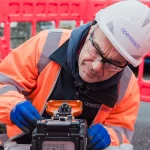


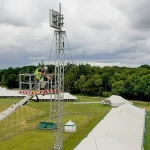

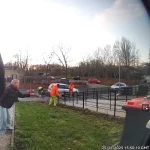
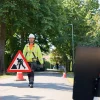
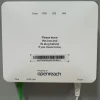


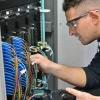






































The state of UK broadband is shocking to be honest.
I was with BT for over 10 years, we had endless issues with either the router or the internet itself. I have never received the speeds I was paying for, not even close! At the closest I was receiving 30mb when I was paying for 70mb. I eventually upgraded to the 100mb package but only received 50mb.
I then switched to Sky when I moved and was told they were the best in the area, they were even worse! Was paying for “Superfast 70mbps”…. But on a good day we got 28mbps…
Fortunately an Altnet (Lightning Fibre) came down our way and we switched to them. We have never had any issues. We pay for 1Gbps and usually always get that speed, though sometimes (usually when a new AAA game comes out) we’ve dropped to 900mbps. And our upload speed is identical at 1Gbps! All the other providers had us capped at something stupid like 15mbps. And we are getting all of this for almost half what we were paying with Sky!
Thats a technology change. The “70mbit” products would have been VDSL, which depend on how long the copper phone line is in the ground, amongst many other things.
The altnet will be fiber all the way to your property – which is why when you order 900mbit, you get 900mbit etc. as lots of the environmental factors that slow VDSL down (line length, lots of lines together creating crosstalk, poor joints in the cable, weather/temperature changes) do not apply.
You were paying for ‘up to’.
I agree with you about the usefulness of the data as presented. My 75Mbs connection does that all the time. As advertised. That is measured on a desktop which is Ethernet connected to the, fairly old, router. That drops to about 50Mbs on my, fairly modern, phone or tablet using WiFi 4. All those results deliver all I could want from any devices.
I expect broadband speeds to be measured at the router. What happens to the service after that is entirely down to the consumer kit and settings.
The My BT app has “Test My Speed” This measures the download and upload to and from the router, it also gives the download and upload speeds to and from the router of the device being used at the time. This being only available if you are with BT Internet i believe.
“… the biggest factor behind this disconnect is the in-home Wi-Fi environment“.
That cannot be repeated enough. Whenever people ring in complaining of poor wifi it’s because the poor bloomin’ router is either next to the microwave, behind the fishtank, wrapped in tinfoil, or all three. It is, of course, anything but their own fault.
@EE Anon: Just what I was saying yesterday, on the article about Youtube and streaming. I was replying to Ad47uk at the time. So Totally agree with your post today.
So … To make full use of our WiFi, we will need WiFi 6 or better and connect it to your WiFi, using either wired or WiFi.
…
Following the ignominious defeat in the long-fought terminology wars, how will we now refer to the suite of 802.11 wireless products?
WiFi has been co-opted.
Tongue-in-cheek, I propose “atmospherics” — a dusty old term which at least associates readily with “interference” as a largely local problem for the householder to resolve.
Let’s be honest, too many ppl just don’t know the limitations of their service provider’s modems, they want to have it out of sight locked away in the far corner of their living room and wonder why it’s not working in the garden.
Most of it is customer education and repositioning of the modem.